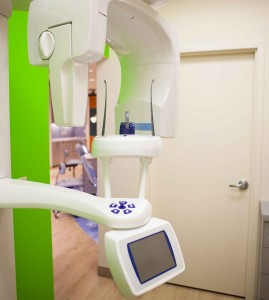Uncategorized
Do Pediatric Dentists use X-rays With Child-Size Radiation Doses?
ALPHARETTA, GA – When it comes to children’s X-rays, all things are not equal. In fact, two children of the same size and age may require variations in the amount of radiation to which they are exposed. This is based on whether your child has special needs, a compromised immune system, if they are on routine medication, or if they have other physical requirements that necessitate the use of X-rays with other healthcare professionals.
Basically, a young patient will need to have his or her individual needs considered and not be given a one-size-fits-all approach to his or her radiation exposure. A good children’s dentist in Roswell will consult with you about your child’s medical history and will document your child’s X-ray protocol based on those facts.
The American Dental Association and the American Academy of Pediatric Dentistry highly recommend that pediatric radiology be used only after a full assessment and exam have been performed on the patient to determine dose and frequency of radiographs.
A popular online publication for Dentistry and Oral Health, “Dear Doctor,” states that:
*According to the Food and Drug Administration, which regulates x-ray equipment, children’s exposure to x-rays is of particular concern for three reasons:
- Younger patients are more radiosensitive than adults (i.e., the cancer risk per unit dose of x-radiation is higher for younger patients).
- Younger patients have a longer expected lifetime for the effects of radiation exposure to manifest as cancer.
- Use of equipment and exposure settings designed for adult use can result in excessive radiation exposure for the smaller patient. All modern x-ray units have settings for children to allow the correct x-ray dosage.
For these reasons, it is only going to benefit you and your child to take the time and research needed to locate a respected, just for kids dentistry. Do your homework and call the general dentist for kids and ask them about their X-ray policies. It is fair to ask some of these questions when speaking with a children’s dentist about children’s radiation exposure:
- Is the dentist familiar with ALARA? This is an acronym for radiation dosage and it means: “As low as reasonably achievable.”
- Does the dentist use a lead apron and lead thyroid collar
- Do they have the latest technology in digital X-ray
- Do they limit CBCT (cone-beam computed thermography)
Based on the number of teeth your child has, safe use for children’s X-rays consist of two or four bitewing radiographs no more than every six months. Of course, this will vary depending on your child’s personal set of circumstances. It is important to keep in mind that The American Academy of Pediatric Dentistry (AAPD) states that X-rays are an extremely valuable contribution in determining and maintaining proper dental health care in children. They aid in the prevention of potential problems that cannot be seen from only performing a visual exam.
The World Health Organization (WHO) also requires that safe children’s X-rays be given at “child-size” amounts, only when necessary, in the region needed, and only scanned once because multiphase scanning is not usually required with children. Overall, when it comes to your child’s dental care, it is best to find a good pediatric dental practice you can trust.
Dr. Nanna Ariaban at Polkadot Pediatric Dentistry is among the many pediatric dentists in Alpharetta that follow these guidelines. Dr. Nanna says she not only uses digital radiographs which have lower dosages of radiation compared to traditional film radiographs, but she also uses child-size dosages.
*Reference: http://www.deardoctor.com/inside-the-magazine/issue-23/x-ray-safety-for-children/
© 2018 Polkadot Pediatric Dentistry. Authorization to post is granted, with the stipulation that Polkadot Pediatric Dentistry, an Alpharetta dentist, is credited as sole source. Linking to other sites from this document is strictly prohibited, with the exception of herein imbedded links.


